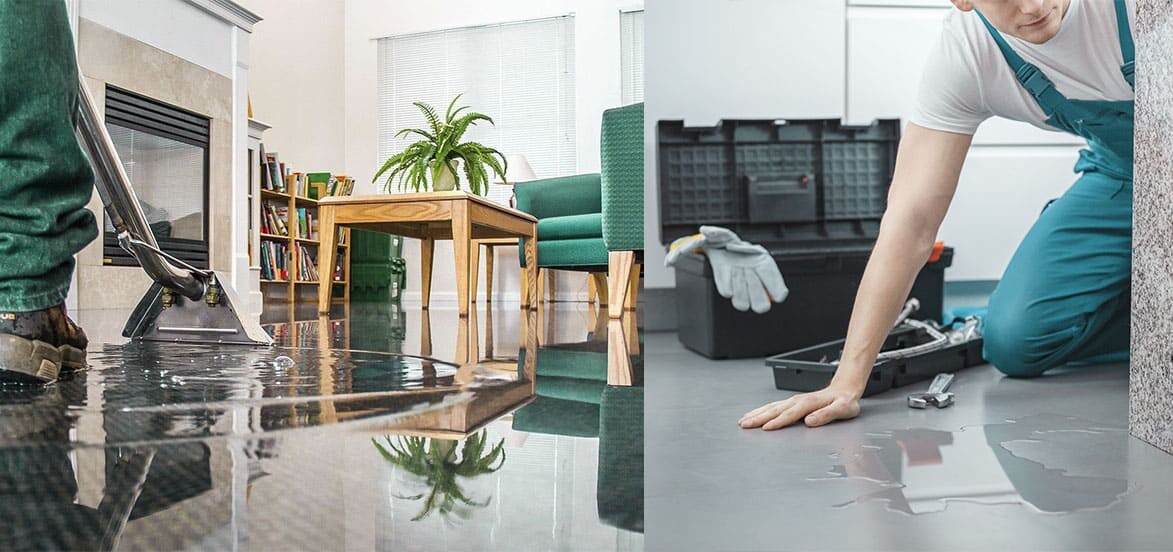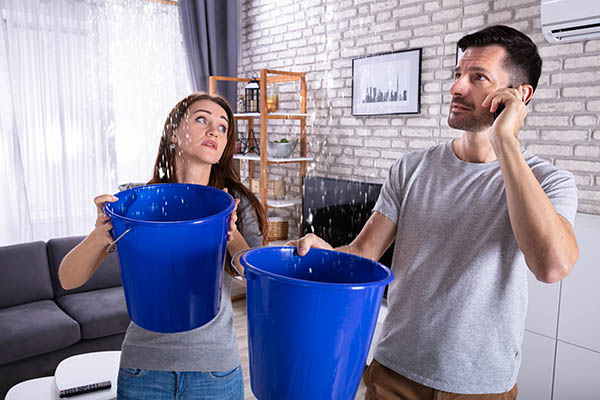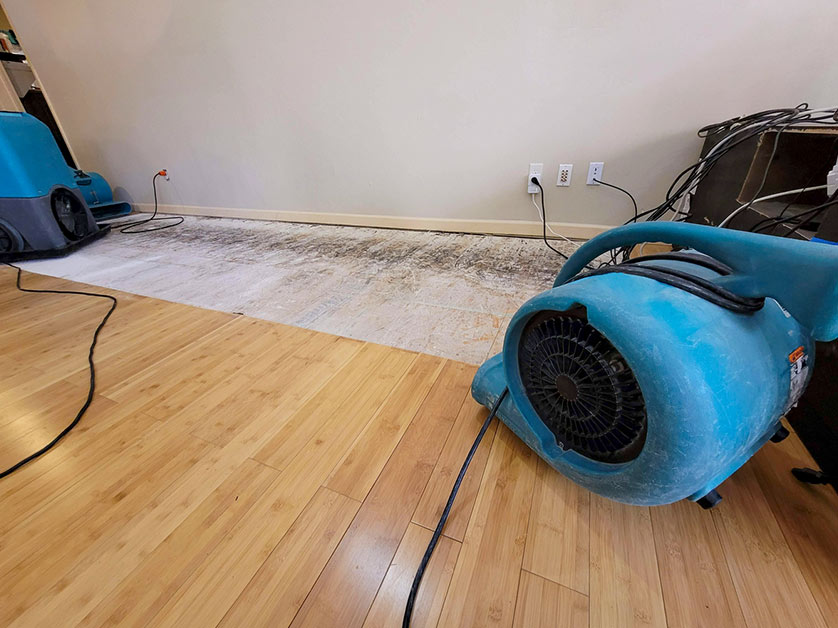Essential strategies for more effective Flood Cleanup Services results
Wiki Article
Water Damage Restoration 101: Recognizing the Process and Cost
Water damage can strike unexpectedly, leaving home owners in a state of confusion. Recognizing the repair procedure is necessary for efficient healing. From examining the damage to selecting the right provider, each step impacts the total end result and expense. Elements such as the sort of water damage and urgency additionally play a significant function. What are the details techniques made use of in restoration, and exactly how can one plan for potential expenses?Types of Water Damage

Preliminary Assessment and Examination

Water Removal Methods
Adhering to the first analysis, reliable water removal strategies are utilized to reduce damage and protect against additional issues. These methods involve using customized devices such as industrial-grade vacuum cleaners and submersible pumps - Water Extraction And Drying. The option of technique depends on the quantity of water present and the sort of products influenced. For standing water, completely submersible pumps are normally made use of for rapid elimination, while vacuum cleaners are perfect for extracting water from carpetings and upholstery. In addition, progressed techniques like water extraction floor coverings may be used for hard-to-reach areas - Water Damage Restoration. The goal is to eliminate as much water as possible, lessening the potential for mold development and architectural damage. Trigger and reliable water extraction is essential in the overall water damage remediation processDrying and Dehumidification Process
Once the water extraction is complete, the drying out and dehumidification procedure ends up being essential to recovering the damaged location. This stage generally employs industrial-grade dehumidifiers and air moving companies to successfully minimize moisture levels. The dehumidifiers reel in moist air, eliminating excess moisture, while air moving companies distribute air to increase evaporation. Tracking tools is frequently made use of to track moisture and temperature level degrees, making sure optimal drying out conditions. The duration of this procedure can differ depending on the degree of the water damage and ecological factors. It is vital to thoroughly completely dry all affected products, consisting of walls, flooring, and furnishings, to stop mold growth and architectural damage. Appropriate execution of this action is important for a successful restoration end result.Cleaning Up and Sanitizing Damaged Areas
Once the drying out procedure is total, a complete initial analysis and assessment of affected locations is essential to determine contamination levels. Effective cleansing methods and ideal products must then be used to remove particles and discolorations. Lastly, sanitization and disinfection approaches are vital to assure that harmful pathogens are removed, bring back the space to a safe problemFirst Assessment and Examination
Before beginning any kind of reconstruction efforts, an extensive first assessment and assessment of the affected areas are vital for effective cleaning and sterilizing. This process entails identifying the level of water damage, identifying the resource of the water invasion, and reviewing the products affected. Examiners generally try to find indicators of mold and mildew development, architectural stability issues, and damaged items. The analysis additionally consists of examining dampness degrees using specialized equipment to assure no surprise water pockets continue to be, as these can bring about more difficulties. Recording the searchings for is crucial for intending the following steps in the remediation process. An in-depth preliminary analysis makes it possible for restoration professionals to develop a targeted approach for efficient cleaning and disinfecting, eventually lessening damage and health and wellness risks.Cleaning Techniques and Products
Reliable cleaning and sterilizing of water-damaged locations need a range of strategies and products customized to the particular materials impacted. For permeable surfaces like drywall and carpeting, extraction approaches are necessary to eliminate excess moisture, complied with by deep cleaning with specialized cleaning agents. Non-porous materials such as ceramic tile or metal can be cleansed using commercial-grade cleaners that properly get rid of contaminants. Vapor cleaning is another effective strategy, specifically for rugs and upholstery, as it uses high temperatures to eliminate bacteria and mold and mildew (Flood Cleanup Services). In addition, green items are progressively preferred for their security and efficiency - Water Damage Restoration. Eventually, selecting the ideal cleansing techniques and products not just guarantees prompt tidiness but additionally aids in protecting against more damage and wellness risks connected with water invasionSanitization and Disinfection Approaches
When addressing water damage, correct sanitization and disinfection approaches are necessary to ensure the safety and security and wellness of the affected setting. After preliminary cleansing, surfaces have to be treated with proper disinfectants to remove microorganisms, mold and mildew, and germs that grow in damp problems. Common methods include using EPA-approved chemical anti-bacterials, which can be used via spraying or cleaning techniques. Furthermore, ultraviolet (UV) light systems can successfully sanitize areas by counteracting bacteria without harsh chemicals. The option of approach frequently relies on the kind of materials affected and the degree of contamination. Inevitably, detailed sanitization not just brings back a safe living room yet also helps stop future health dangers linked with lingering moisture and mold growth.
Repair Work and Restoration Options
Examining the damage created by water exposure is important for determining the suitable repair services and repair choices. House owners might encounter different problems, including harmed drywall, deformed flooring, and compromised structural components. Relying on the degree of the damage, repair work may involve changing areas of drywall, mounting new flooring, or enhancing architectural beams. In cases of extreme damage, total replacement of affected materials could be required. Furthermore, expert restorers typically suggest utilizing wetness meters to evaluate covert moisture degrees prior to picking the most effective course of activity. It is essential to act immediately to avoid mold growth and more damage. Selecting the best options not only recovers the residential or commercial property however likewise ensures lasting safety and security and capability.Elements Affecting Restoration Expenses

The extent of water damage straight influences the repair sets you back home owners can anticipate to incur. Aspects such as the source of the water, the period of exposure, and the afflicted products significantly affect rates. Tidy water damage from a broken pipe is normally less costly to restore compared to damage caused by sewage. Additionally, the degree of contamination determines the demand for specialized cleansing and disposal solutions, better raising expenses. Geographical area additionally plays a duty, as local labor prices and accessibility of restoration solutions can differ. Ultimately, the necessity of the feedback influences prices; quicker treatments generally result in lower general expenses by avoiding further damage. Understanding these variables is important for property owners when estimating remediation costs.
The 3 primary kinds of water damage are classified based on contamination levels: clean water, grey water, and black water. A thorough preliminary analysis and examination are crucial steps in the water damage repair process. For standing water, completely submersible pumps are usually read more utilized for rapid elimination, while vacuum cleaners are optimal for extracting water from rugs and furniture. The extent of water damage straight affects the remediation sets you back house owners can expect to sustain. Clean water damage from a broken pipeline is normally much less expensive to restore contrasted to damage created by sewage.
Report this wiki page